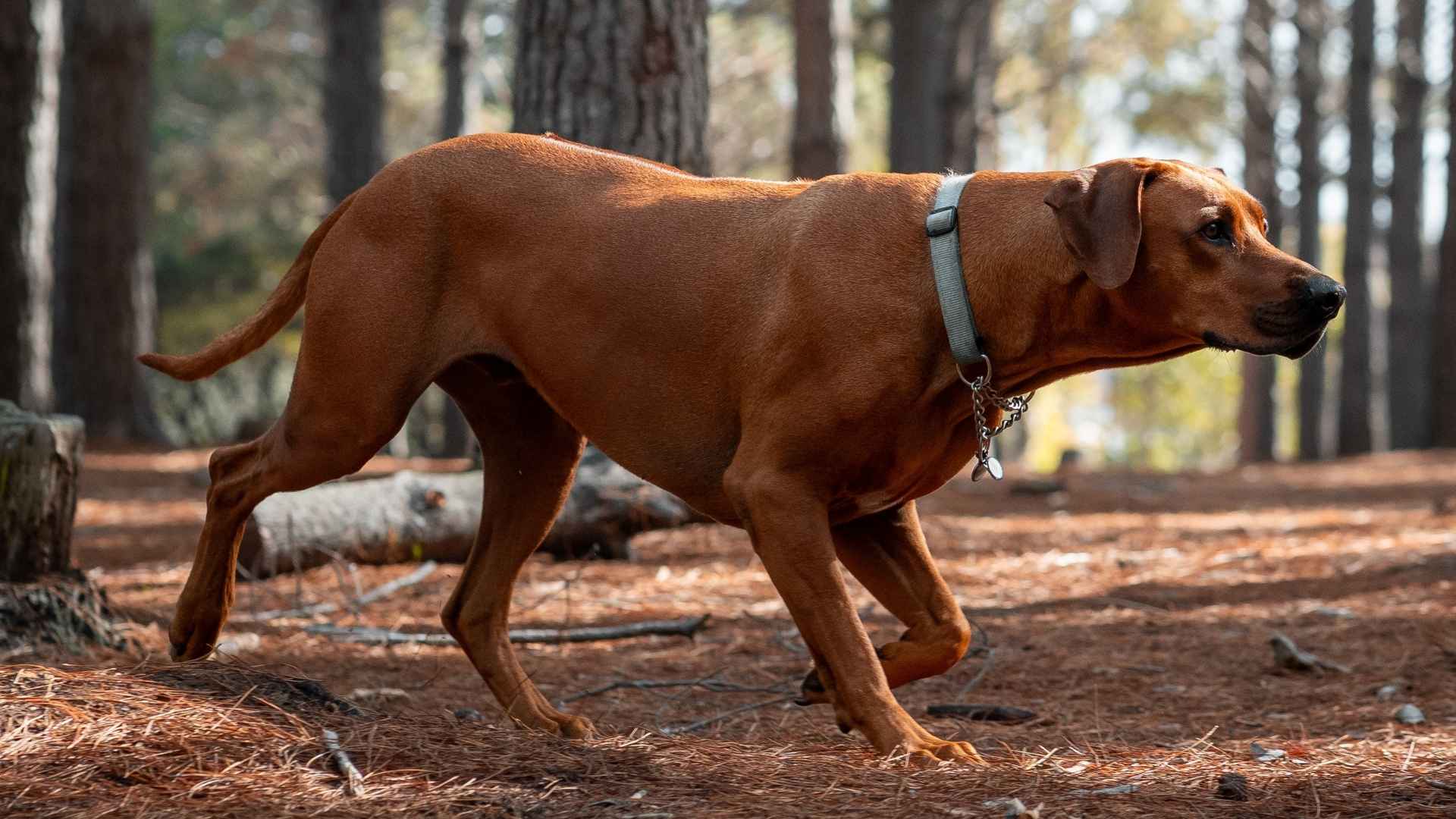Across rugged hills and dense woodlands, certain dogs have been bred for centuries to track, chase, and drive game deep into the forests. Among the most demanding of these tasks is pursuing wild boars—an animal known for its strength, speed, and ferocity.
These breeds are built for endurance and determination, carrying instincts sharpened by generations of work alongside hunters. They follow scent trails through undergrowth, plunging into brush and mud, their focus unbroken by rough terrain or sudden turns.
Many of them developed in regions where hunting boar was not only a tradition but a necessity, creating dogs that are fearless, strategic, and tireless. Their skills combine raw athleticism with the judgment needed to keep a safe distance while pushing the game toward hunters or deeper into the woods.
These are the breeds whose work is measured in grit and ground covered. Let’s look at 9 dog breeds that chase boars into forests.
Dog Breeds That Chase Boars Into Forests
1. Bluetick Coonhound
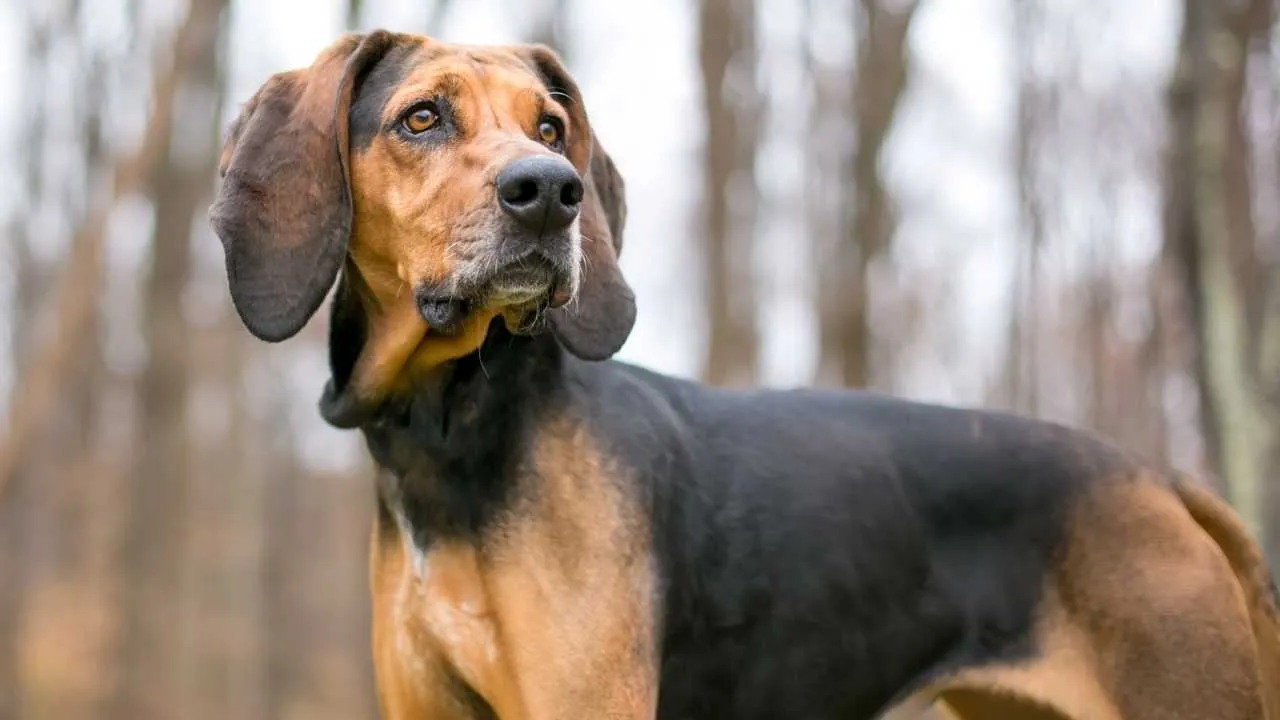
The Bluetick Coonhound developed in the American South, prized by hunters for its ability to follow scent across rough ground. Its lineage traces to French hounds brought to the United States, blended with English foxhounds to create a dog with unmatched nose and stamina. It was built for long nights and difficult terrain.
Blueticks have a deep, musical voice, but when chasing boar, they rely as much on silent tracking as they do their famous “bawl.” Their instincts drive them to push forward without hesitation, weaving through brush and timber with confidence. That relentless focus makes them effective partners for demanding hunts.
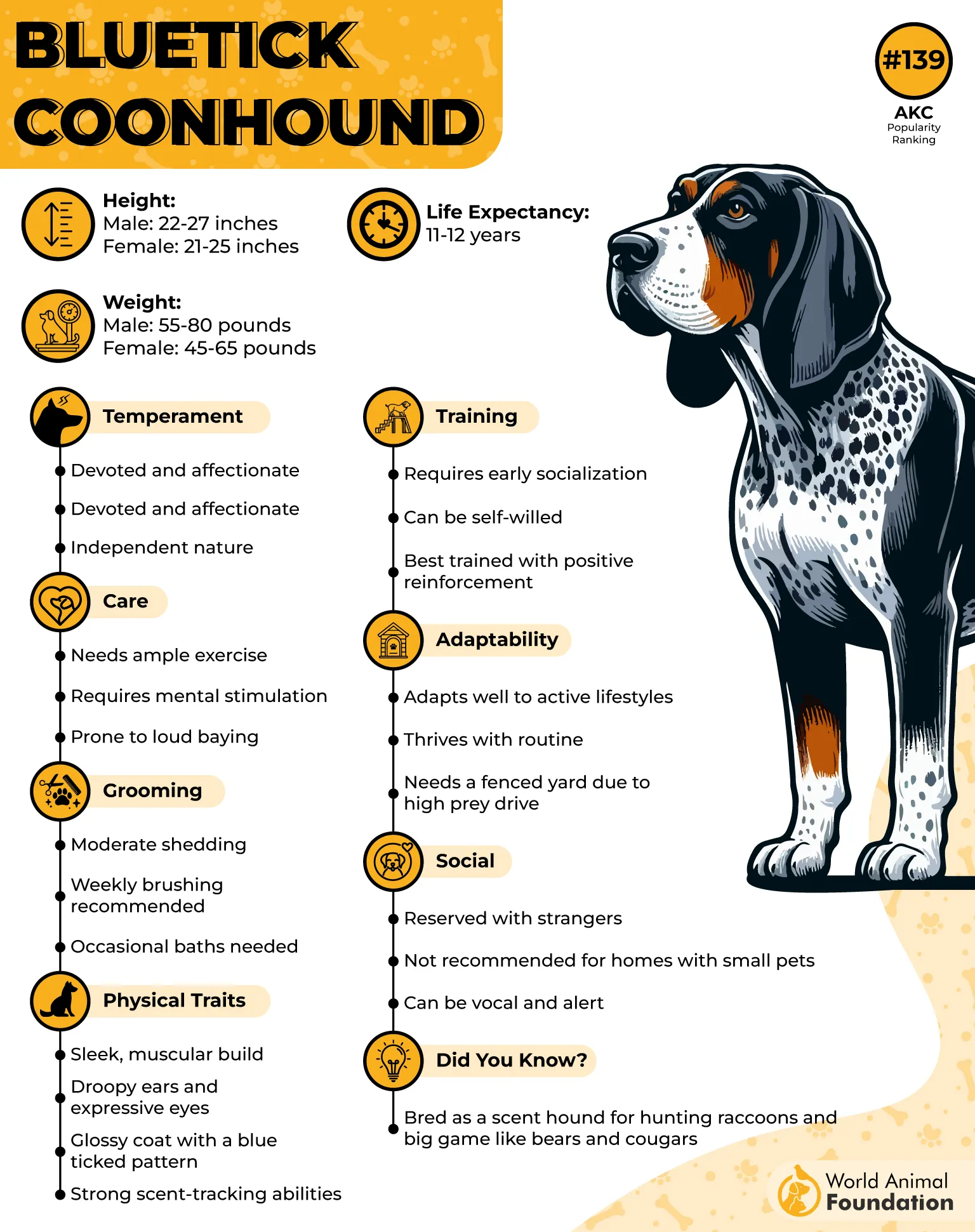
According to the AKC, their coats are short and dense, patterned with the distinctive “ticking” that gives the breed its name. Grooming is minimal, requiring little more than brushing to remove loose hair. Their lean frame carries strength without bulk, making them agile in the forest.
Training a Bluetick takes time and commitment. They are independent thinkers who work best with steady, consistent guidance, responding well to experienced handlers. That balance between autonomy and cooperation allows them to work miles ahead of the hunter while staying under control.
Their drive for the hunt is intense, and that energy extends to every aspect of their lives.
Fun Fact
Bluetick Coonhounds are the state dog of Tennessee, celebrated for their deep cultural ties to the region’s hunting traditions.
2. Bloodhound
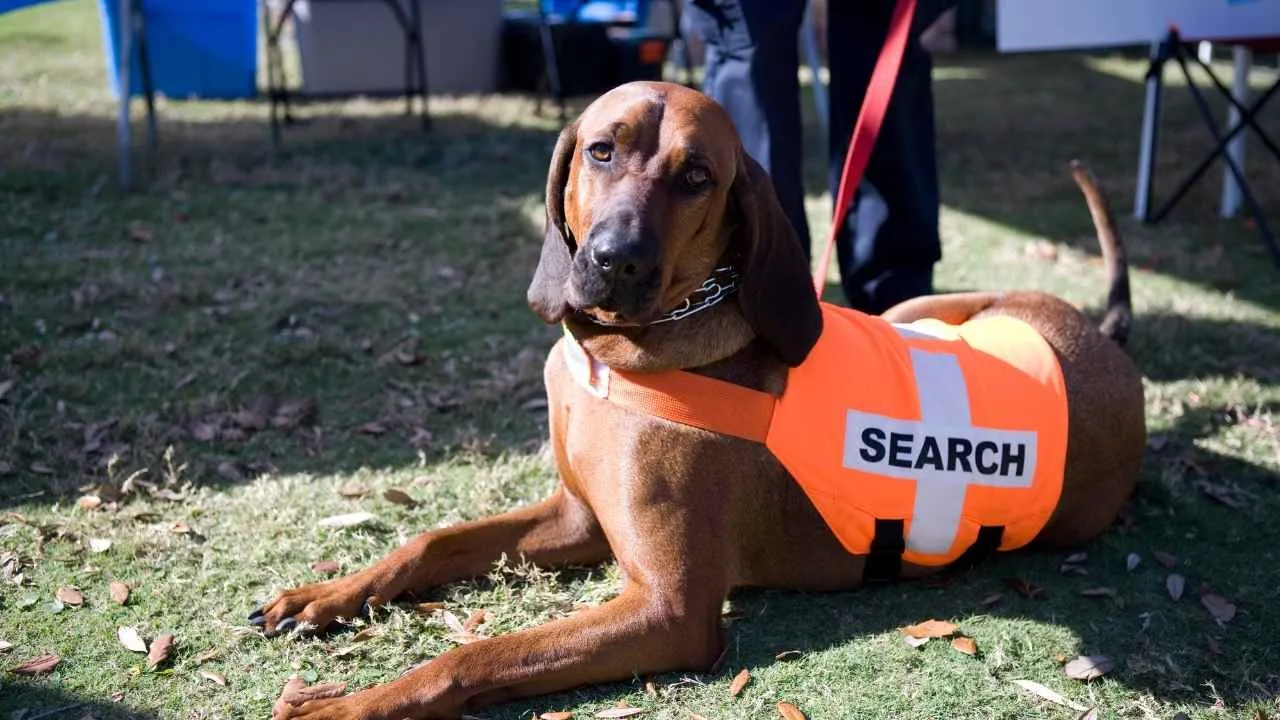
The Bloodhound is one of the oldest scent-tracking hounds in the world, with roots reaching back to medieval Europe. Bred by monks to track game and people, its scenting ability is unmatched, following trails that are days old. That same skill translates perfectly into tracking boar across sprawling forests.
This breed’s sense of smell is legendary. A Bloodhound can work with its nose close to the ground for hours, moving steadily through thickets and bogs without losing the trail. Hunters rely on that persistence when the chase leads deep into the woods.
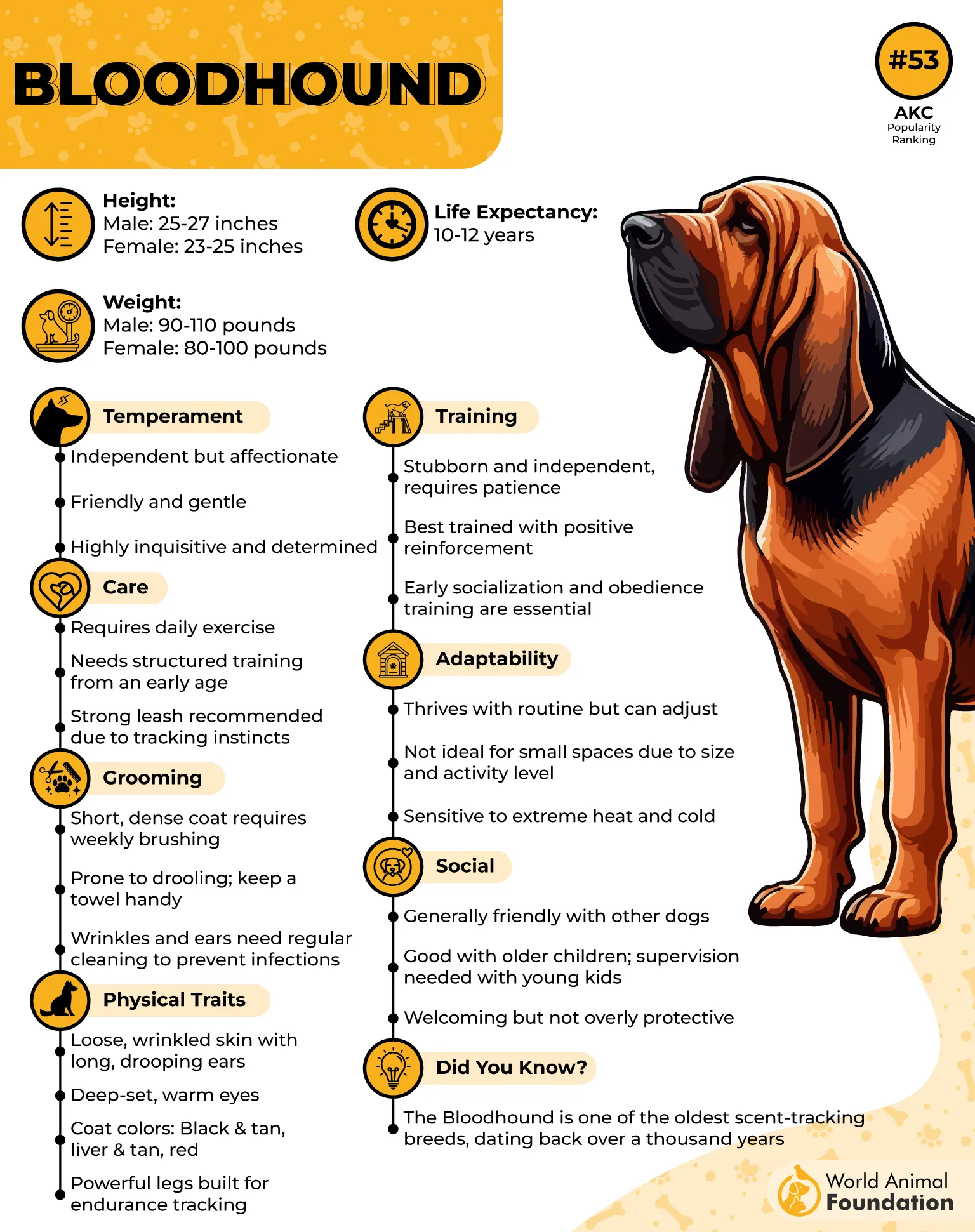
Bloodhounds are large, with long ears and loose skin that funnels scent toward their powerful noses. Their drooping eyes and wrinkled faces are iconic, and their coats require only modest care to stay in good condition.
Their temperament is gentle at home but entirely work‑focused in the field. Training is best approached with patience—they are eager to learn but can be stubborn when distracted by a scent. Handlers need to earn their attention through consistency.
When they’re working, they’re tireless, pushing forward with quiet determination until the job is done.
Fun Fact
A Bloodhound’s scenting evidence is so reliable that it has been accepted in court cases for over a century.
3. American Foxhound
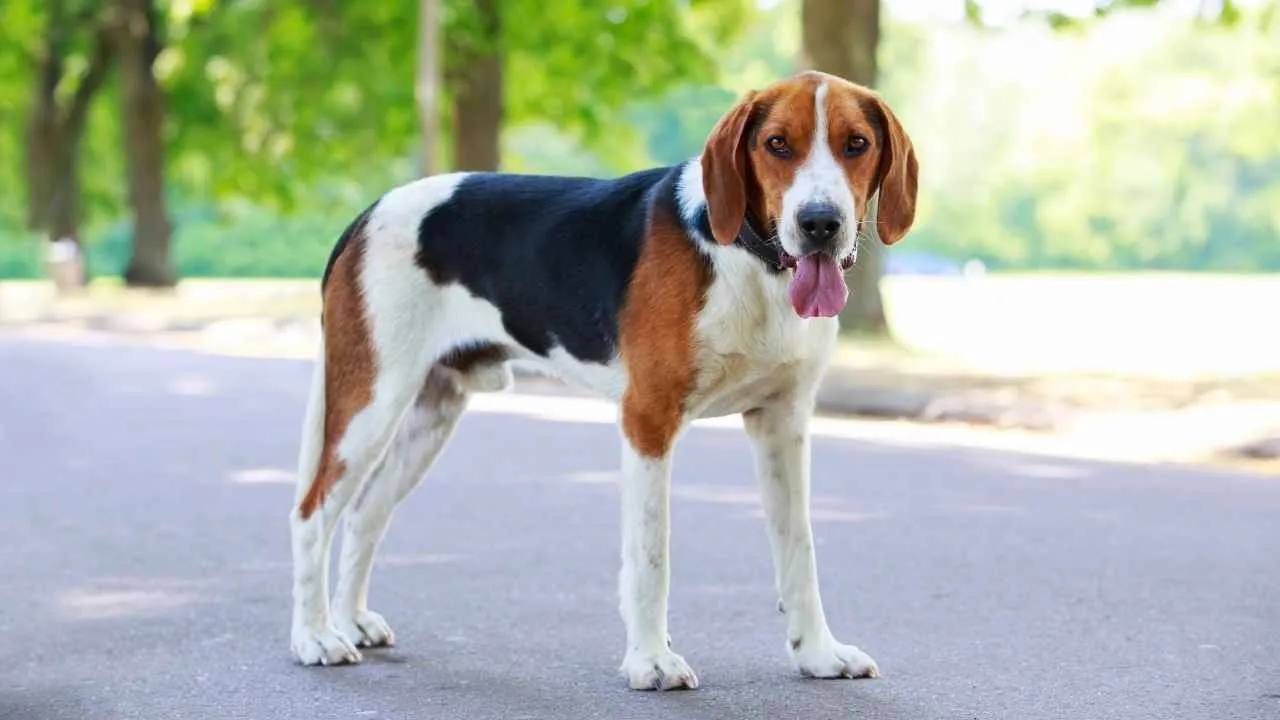
The American Foxhound is one of the oldest native breeds in the United States, descended from English foxhounds brought to the colonies in the 1600s. Bred for chasing foxes and other quarry over miles of rough land, they later proved their skill in driving boars into forests as well. Their endurance is their greatest asset.
Foxhounds are built for speed and distance, with long legs and a lean, athletic frame. They can run tirelessly for hours, covering ground quickly while staying on the scent. That stamina keeps the pressure on game animals in demanding hunts.
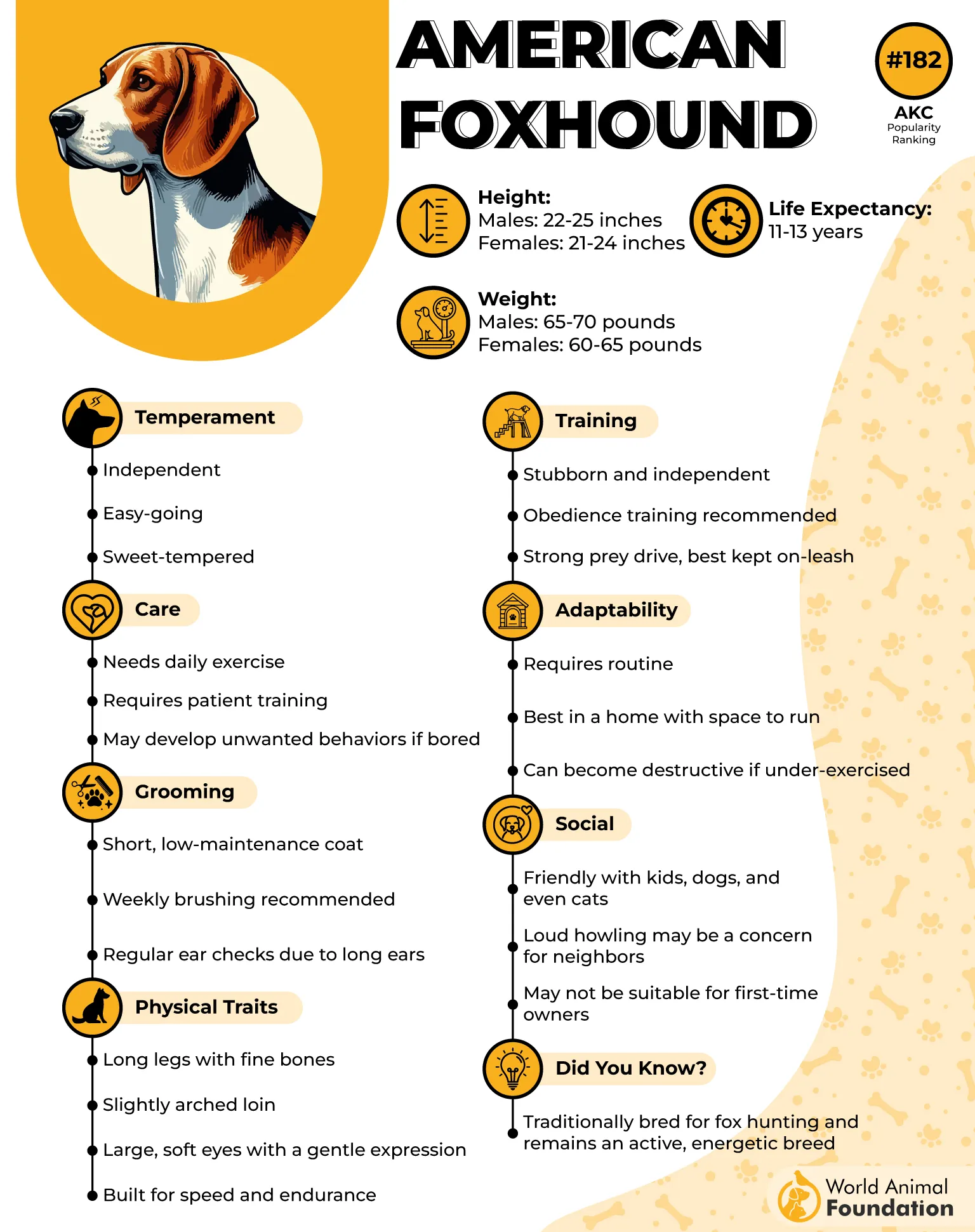
Their coats are short and easy to maintain, typically seen in a range of hound colors. Grooming is straightforward, and their low‑maintenance nature suits the hard work they perform.
As per PetMD, training an American Foxhound requires experience. They are independent and driven, bred to think for themselves while out of sight. A firm but fair hand helps channel their energy into controlled, effective hunting.
Their calm disposition off the field contrasts with their intensity during a chase, showing the versatility that made them prized working dogs for generations.
Fun Fact
George Washington kept and bred American Foxhounds, referring to them in his diaries and calling them “sweet‑lipped hounds.”
4. Redbone Coonhound
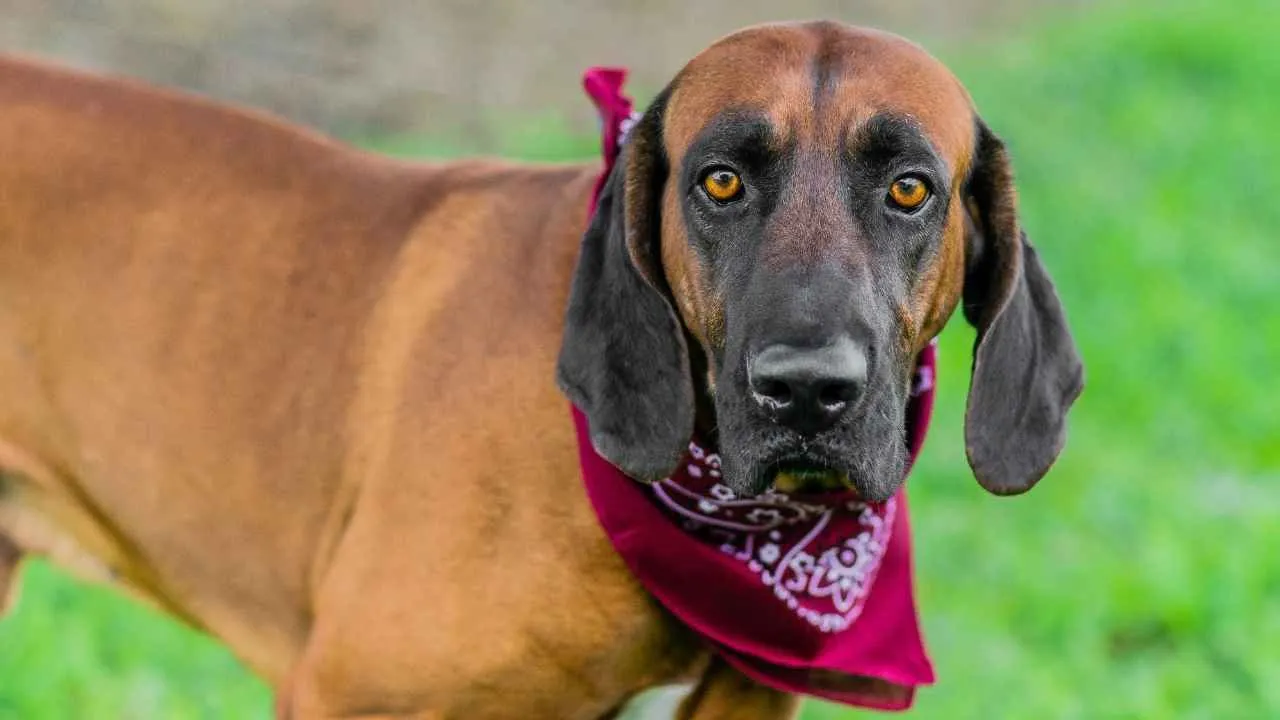
The Redbone Coonhound was developed in the American South, shaped by hunters who needed a fast, versatile hound. With its deep red coat and powerful frame, it became a reliable partner for pursuing tough quarry like boar through thick brush and over hills. Its origins blend Irish Foxhounds with Bloodhounds and other early scent hounds.
Redbones are known for their agility, moving through dense forests and rocky terrain without slowing down. They’re relentless on a trail, their noses locked onto scent, their bodies driving forward until the job is complete.
Their short, glossy coat requires little upkeep beyond brushing, but its striking color is instantly recognizable. Beneath that coat is a dog that’s all muscle and endurance, built for long hunts.
Training a Redbone is straightforward for an experienced hunter. They’re eager to work but have a streak of independence that benefits from early, consistent guidance. Once they understand their role, they thrive on it.
Their hunting voice carries through the woods, but their true strength is in their focus—a Redbone intent on the chase rarely lets go.
Fun Fact
The Redbone Coonhound is the only coonhound bred entirely in the United States with its signature solid red coat.
5. Plott Hound
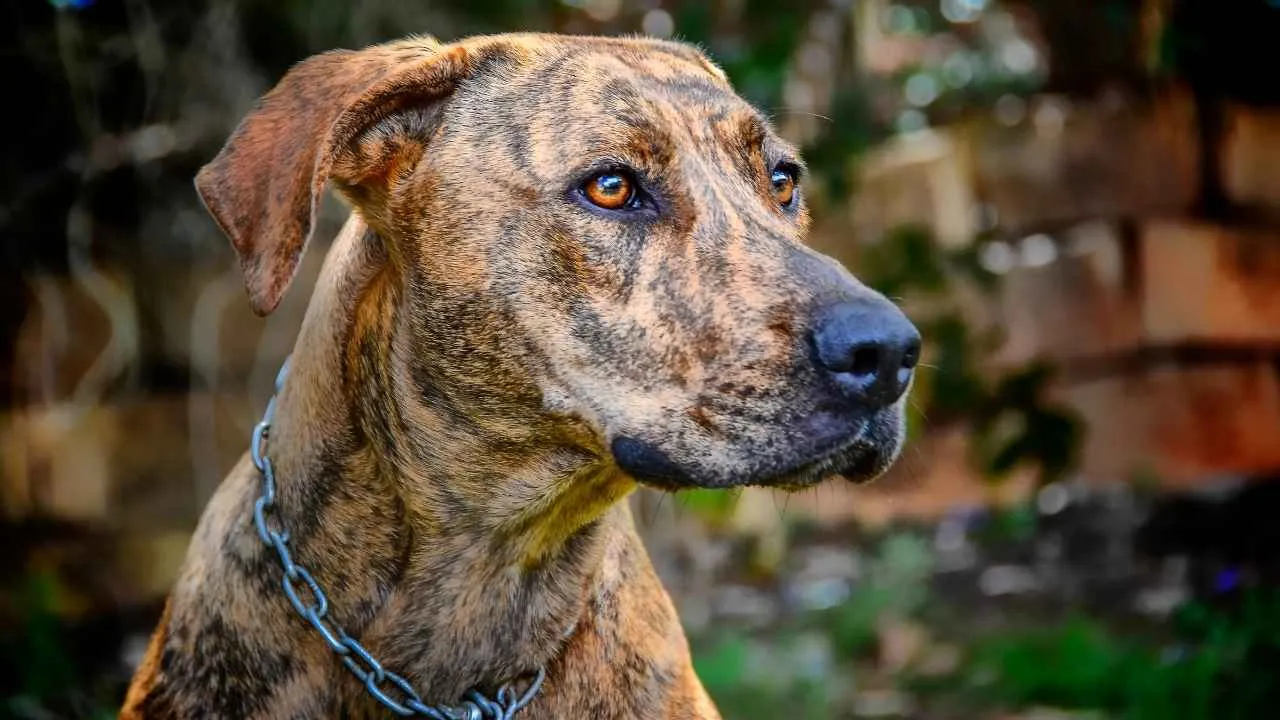
The Plott Hound is North Carolina’s state dog, with a history rooted in hunting large game. German immigrants brought their Hanover hounds to America in the 1700s, and the Plott family refined them for tracking boar and bear in the Appalachian Mountains. That lineage created a hound with relentless drive and grit.
This breed has a sleek, brindle coat that’s easy to maintain, needing little more than brushing. Its lean, muscular frame allows it to slip through dense brush and steep hills with surprising ease. The Plott’s athletic build makes it ideal for fast, demanding hunts.
Plott Hounds are bold and fearless, showing little hesitation when the quarry is tough. They have an intense focus and an eagerness to stay on a scent until the job is done. That determination is one of their strongest traits in the field.
Training a Plott Hound requires respect for its independence. These dogs think for themselves but respond well to calm, consistent instruction. Their ability to balance autonomy with teamwork makes them stand out in boar hunting.
They are driven by instinct and energy; their paws rarely still when a hunt is underway.
Fun Fact
The Plott Hound is the only coonhound breed that does not descend from English foxhounds—it is entirely of German origin.
6. Black and Tan Coonhound
The Black and Tan Coonhound is one of America’s most recognizable hunting breeds, developed from foxhounds and Bloodhounds. Its purpose has always been to track game across long distances, from raccoons to deer—and yes, boar as well. This dog’s stamina is legendary.
Their black-and-tan coat is classic and low-maintenance, needing only weekly brushing to keep it in good shape. Their long ears and deep-set eyes give them that unmistakable hound look, built for scent work.
Black and Tan Coonhounds are known for their endurance. They can track for hours without losing steam, keeping pressure on game in the thickest forest. That persistence makes them invaluable on hunts that demand time and patience.
Training requires balance. They are intelligent but stubborn, needing an experienced handler who can guide their instincts without crushing their independence. Once they trust their person, they work with impressive consistency.
Their powerful noses lead them deep into the woods, and they won’t stop until they’ve found what they’re after.
Fun Fact
Black and Tan Coonhounds can pick up scents that are days old, a gift inherited from their Bloodhound ancestors.
7. Rhodesian Ridgeback
The Rhodesian Ridgeback has African roots, bred to hunt lions and guard homesteads in harsh conditions. Its courage and endurance naturally translate to boar hunting, where steadiness and bravery are essential. The ridge of hair running along its back gives the breed its name.
These dogs are tall, strong, and fast, able to cover huge stretches of land without tiring. Their short, reddish coats shed little and require minimal grooming, leaving them always ready for work.
Ridgebacks are known for their even temperament and self-control. They’re observant and deliberate, traits that make them thoughtful hunters rather than reckless chasers. When they commit to the chase, though, they do it with remarkable power.
Training a Ridgeback requires patience and structure. They respond well to clear, fair leadership but won’t thrive under harshness. Their intelligence makes them excellent partners once they understand their handler’s expectations.
They work with a calm intensity that makes them suited to demanding hunts, handling the challenge of boar with confidence.
Fun Fact
Rhodesian Ridgebacks were once called “African Lion Hounds” for their historic role in tracking and holding lions at bay for hunters.
8. Weimaraner
The Weimaraner was developed in 19th-century Germany for hunting big game, including boar and deer. Its silver-gray coat earned it the nickname “Gray Ghost,” a nod to the way it slips through the trees almost unseen. Speed and focus define this breed’s work.
Weimaraners are built like athletes, long-legged and lean, with explosive power. Their short coats require almost no maintenance, which suits their active, outdoorsy lives.
They are intelligent, eager, and quick to learn, making training smooth when handled with care. Their energy, though, is boundless, and it must be channeled into work to keep them balanced.
These dogs have a sharp prey drive and can chase for hours without letting up. They push hard in the field, weaving through dense cover with single-minded intent.
Weimaraners bring intensity to every hunt, their instincts tuned to the job, their stamina rarely fading.
Fun Fact
Weimaraners were originally bred for German nobility and were once used to hunt wolves and even bear.
9. Catahoula Leopard Dog
The Catahoula Leopard Dog is Louisiana’s state dog, developed to track and corner wild boar in the dense swamps and forests of the South. Its name comes from Catahoula Parish, and its working reputation is as colorful as its mottled coat.
Catahoulas are powerful and agile, capable of weaving through mud, water, and undergrowth with ease. Their webbed feet help them cross swamps and streams, making them exceptional in difficult terrain.
Their coats come in a variety of striking patterns, from leopard spots to brindles. Grooming is easy, but their striking looks hide a working dog’s drive and grit.
Training a Catahoula takes confidence and consistency. They’re smart, but their independence means they need a handler who can set boundaries early. Once they bond with their person, their loyalty is fierce.
Catahoulas are relentless boar dogs, combining speed, power, and brains to push game exactly where it needs to go.
Fun Fact
Catahoulas are known for “glass eyes”—striking pale or blue eyes that stand out sharply against their speckled coats.
Conclusion
The dogs that chase wild boars into forests come from several breeds, each built for stamina, grit, and instinct. These aren’t typical family dogs or casual hunting companions; they’re working dogs, shaped by generations of purpose. Many hunters rely on bay dogs to locate and contain wild hogs, while others train catch dogs for physical control. Whether tracking mountain lions, wild turkeys, or black bears, these dogs are chosen for their determination and strength.
Most dogs in this category are medium to large breeds, equipped with a thick coat or double coat to protect them in rugged terrain. Their roles vary, from scent tracking in dense cover to flushing game like upland birds from thickets. They share a keen sense of direction and a powerful prey drive, traits that make them invaluable for big game hunters and essential for hog dog work.
Some, like the Treeing Walker or the Black Mouth Cur, are well suited for older hunters looking for steady, responsive field dogs. Others, like the Weimaraner or Rhodesian Ridgeback, appeal to those seeking a versatile breed with agility and endurance.
The American Kennel Club recognizes many of these working breeds, while others continue to serve under the radar, tough, tested, and trusted. Across the upper Midwest, the South, and beyond, these dogs continue their work where it matters most: in the forests, on the scent, doing what they were born to do.


